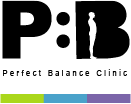Don’t ignore that back or neck pain! Herniated discs, also known as slipped or ruptured discs, can sometimes be asymptomatic and only cause mild back or neck pain. However, more severe cases can cause more intense pain and even result in muscle weakness down the arms or legs, depending on the location of the herniation.
Understanding Herniated Discs
These injuries can be caused by physical trauma where small tears in the disc allow the gel-like centre to leak out and cause a bulge. The protrusion has the potential to compress the spinal nerves, resulting in pain and other related symptoms. Additionally, the degeneration of the disc associated with ageing can give rise to herniated discs as its shock-absorbing capacity diminishes over time.
The Healing Process
It is comforting to learn that a herniated disc frequently has the ability to heal itself. Following the injury, the body promptly initiates the process of healing. Over time, the herniation tends to shrink, and you may experience partial or complete pain relief. However, it’s important to note that while the pain may decrease, the disc disease continues to progress.
Exercises for Herniated Discs
While rest and medication are often the first steps in treating a herniated disc, certain exercises can also help alleviate symptoms and promote healing. Here are three simple exercises to help with disc herniations:
Spinal Decompression
This exercise requires next to no equipment and helps to increase the spacing in the vertebrae, taking pressure off the discs allowing them to return to a normal position.
To perform this, hang from a bar or door frame for 30 seconds and then repeat this 3 times. Make sure to release easily from the position to avoid jolting or spasms.
Cat-Cow Pose
The Cat-Cow pose is a gentle flow between two positions that warms the body and brings flexibility to the spine. It stretches the back torso and neck, and softly stimulates and strengthens the abdominal organs.
When performing this exercise, begin by positioning yourself on all fours. In a gradual motion, lower your abdominal region towards the floor, attentively sensing the mobility of each individual vertebra as your gaze ascends towards the ceiling. Then, slowly round your spine, feeling each vertebrae moving and bringing your chin to your chest. Repeat this 10 times for 3 sets.
Half Cobra Pose
The Half Cobra Pose helps encourage the disc materials to push back into place, allowing for improved healing.
To perform this exercise, lie down on your front. Elevate yourself onto your elbows while maintaining a grounded position with your hips. Sustain this posture for a duration of 15 seconds, subsequently revert back to the starting point, and repeat the sequence for a total of 30 seconds. Repeat this 10 times in total.
Prevention is Key
Although these exercises can assist in symptom management for a herniated disc, prevention remains the optimal strategy. This encompasses implementing proper lifting techniques, maintaining favourable posture during various activities, participating in an appropriate exercise regimen to strengthen weakened abdominal muscles, ensuring an ergonomic work area, managing weight and body composition effectively, coping with stress in a healthy manner, and refraining from smoking.
Keep in mind that if you are encountering severe pain or other symptoms, it is crucial to seek guidance from a healthcare professional before initiating any new exercise routine.
For more information about herniated discs
This article was written by our team of specialist therapists at Perfect Balance Clinic. If you would like more specific advice about how our team can help you with this condition or symptoms you may be having, please complete the contact form below and one of the team will get back to you shortly.





